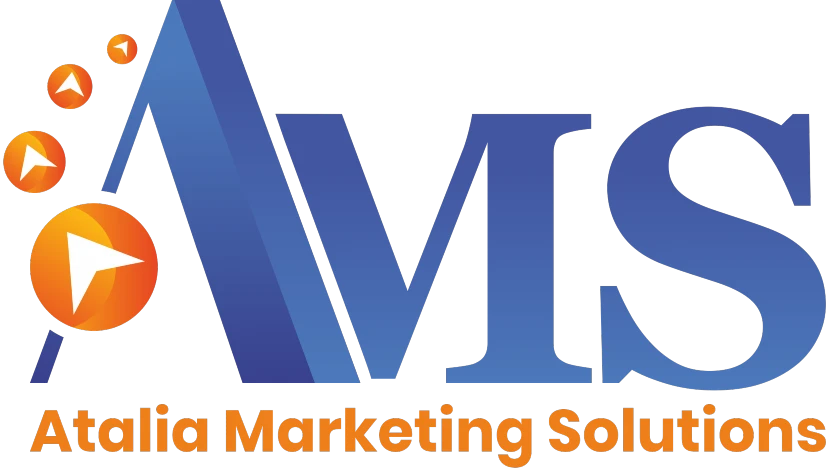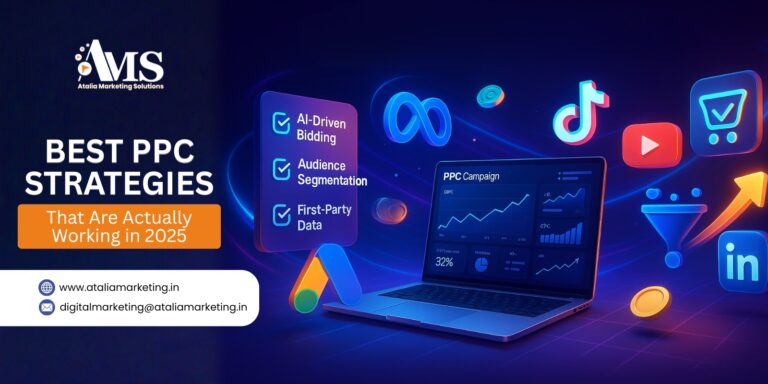|
Getting your Trinity Audio player ready...
|
Regardless of how much the digital world evolves, PPC (Pay-Per-Click) is still an impact channel if you change wisely. We’re experiencing more revolutionary change than ever in 2025, AI, privacy, new ad types, and changing consumer behavior are making marketers change everything from bidding tactics to creative execution.
Here’s what actually works today, and how to implement these strategies effectively for your brand.
- Let AI & Automation Be Your Co-Pilot (But Don’t Leave the Wheel)
Smart Bidding & Automated Campaigns
Manual bidding is becoming less viable. Most advanced advertisers now lean on machine learning tools like Target CPA, Target ROAS, Enhanced CPC, and Google’s newer AI-driven bidding systems to optimize toward conversions rather than clicks.
For example, Performance Max campaigns let Google’s AI allocate budget across Search, Display, YouTube, Discover, and more — freeing you from manual channel juggling.
But don’t go full autopilot. You still need to:
- Set guardrails (budget limits, negative keyword lists, audience exclusions)
- Monitor the learning phase and intervene when performance lags
- A/B test asset variations regularly, because AI may converge too quickly on a suboptimal creative
Real-Time Signals & Context
Modern automation processes more real-time signals than humans can—time of day, device, location, weather, competitor activity, etc.
So use tools that support real-time optimization (rule-based alerts, scripts, bids that adjust within the auction).
- Build a Foundation with First-Party Data & Privacy-Forward Targeting
First-Party Data Is Your New Gold
Third-party cookies are vanishing, and browser limits are tightening. The future is using your own data — customer email lists, CRM signals, website behavior data, offline conversions — to power enhanced audience segmentation and lookalike modeling.
Use Customer Match, CRM-to-ad-platform syncing, and consent mode / server-side tracking to ensure data continues flowing in compliance.
Switch from Behavioral to Contextual / Intent-Based Targeting
Behavioral targeting is less reliable as it gets older, so contextual targeting (ad placement in an environment related to the content) and intent-based signals grow more significant.
For instance, pages related to “sustainable fashion” would be a more effective audience for your green product range than using only third-party user profiles.
- Creative Is the Deciding Factor — Not Just Budget or Bid
Use Dynamic & AI-Generated Creative Assets
In 2025, creative fatigue is a big killer. Use AI tools to generate multiple headlines, images, or video combinations. But always review for brand voice, relevance, and compliance — AI is a helper, not the final creator.
Pair that with dynamic creative optimization (DCO) to let the algorithm test and rotate the best-performing combinations.
Start With Message Matching & Post-Click Relevance
Your ads must align with the landing page. If your ad promises “50% off running shoes,” the landing page should reflect that exact messaging and offer. That coherence boosts conversion rates and Quality Score.
Use Dynamic Text Replacement (DTR) to auto-inject keywords or geographic names into landing page headlines for better alignment.
Embrace Short-Form Video, UGC & Influencer-Style Ads
Video continues to dominate attention. Reels, YouTube Shorts — even brand ads are shifting to snackable formats.
User-generated content (UGC) or influencer-type creative lends authenticity and social proof. Add that to robust CTAs and monitor performance on various platforms.
- Smarter Structuring, Granular Targeting & Negative Control
Rethink Campaign & Ad Group Structure
A well-organized, logical structure makes the machine learn faster. Place campaigns by funnel step, product lines, geos, or priorities; don’t blend unrelated keywords within a single ad group.
Make different campaigns for brand terms vs non-brand, and for high-intent vs awareness segments.
Keep Negative Keywords Updated
To prevent wasted spend, aggressively prune search terms that don’t convert, add negative keywords, and continuously refine the list.
Geo + Time + Device Layering
Don’t address your audience as a single homogeneous clump. Utilize granular geotargeting (by ZIP code, city, area), ad scheduling (dayparting), and device bid modifiers to dial in which impressions receive more budget.
- Prioritize Conversion Rate Optimization (CRO) & Funnel Diagnostics
You can throw all the ad spend in the world at a campaign, but if your funnel leaks — it won’t convert. In 2025, the difference-makers are metrical refinement and continuous CRO.
Deep Funnel Audits & Drop-Off Analysis
Chart all stages: impression → click → landing page → form → purchase (or lead).
Leverage tools such as heatmaps, session recordings, and analytics to identify drop-off points and friction.
Offline / Cross-Device / Cross-Channel Attribution
To truly measure effectiveness, integrate offline conversions (e.g. in-store, phone calls), and stitch cross-device or cross-channel touchpoints. This helps you assign credit correctly and optimize holistically.
Don’t Just Optimize for “Clicks” — Optimize for Value
In many campaigns, the highest-click ad isn’t the most profitable. Focus on CPA, ROAS, lifetime value (LTV) metrics, not just volume.
- Expand Beyond Google — Diversify to Reduce Risk
Relying solely on one ad platform is dangerous, especially with rising CPCs and policy shifts.
Test Alternative Platforms
- Microsoft / Bing Ads — often lower costs, good for search diversification (also integrates with LinkedIn targeting)
- Meta & Instagram — strong for awareness + retargeting funnels
- TikTok / Snap / Pinterest — creative-forward platforms with engaged audiences
- Programmatic / Display / CTV — for scaling brand reach beyond search
- Amazon / Marketplace Ads — if you have product inventory
Cross-Channel Synergy
Let insights flow across channels. If a keyword or creative performs well in search, test it in display or social. Use retargeting across platforms. Use common attribution models to guide investment shifts.
- Budget Strategy: Scaling, Testing & Protecting Against CPC Inflation
Step-Increase Scaling
Rather than doubling budgets and risking collapse, increase spend in controlled increments (e.g. +10–25%), then pause to let models stabilize. This “step scaling” approach is discussed in PPC communities as a safer growth tactic. Reddit+2Search Engine Journal+2
Reallocate vs Just Increase
If you hit CPM / CPC inflation (yes, costs are rising — Search CPCs are up ~45% in many accounts) Search Engine Land+2TheeDigital+2
Then shift budgets toward:
- high-converting channels or audience segments
- off-peak hours or cheaper geographies
- creative / funnel improvements
- platforms with lower competition
Use Forecasting & Seasonality
Model expected conversion surges (e.g. holiday, sale periods) and raise bids strategically in those windows. Many ad systems now allow seasonal adjustments / bid multipliers. Search Engine Land+3Search Engine Land+3ROI Revolution+3
- Governance, Measurement & Ethical Transparency
Data Governance & Consent
Make sure your privacy practices are robust. Use updated consent mode / server-side tracking to keep data flowing when users decline cookie-based tracking but still allow modeled conversions. e9digital+2Search Engine Journal+2
Regular Audits & Health Checks
Every 1–2 months, review your account structure, negative keywords, creative performance, and budget drift. Clean up stale campaigns.
Use alert rules to flag sudden drops in conversion rate, spikes in CPA, or campaign overlapping cannibalization.
Transparent Reporting & Education
Communicate clearly with stakeholders (clients, leadership) about how automation works, why you make adjustments, and the tradeoffs (e.g. some loss of manual control in exchange for scale).
Putting It All Together: A Sample 2025 PPC Roadmap (for Atalia’s Hypothetical Campaign)
| Phase | Focus | Tactics |
| Phase 1: Audit + Foundation | Clean baseline | Audit tracking, map funnel, sync CRM data, set up conversion tracking & offline attribution |
| Phase 2: Pilot & Test | Validate assumptions | Launch small-scale test campaigns using Smart Bidding, multiple creatives, contextual targeting, alternative platforms |
| Phase 3: Scale & Optimize | Growth | Use step scaling, expand best-performing geos, creatives, and channels; ramp budgets gradually |
| Phase 4: Expand & Defend | Defend against inflation | Diversify channels, refine automation rules, deepen creative testing pipeline, raise data sophistication |
| Phase 5: Continuous Evolution | Stay on top | Quarterly health audits, explore new ad formats (e.g. AR/VR, in-app), keep a pulse on platform changes & privacy landscape |

